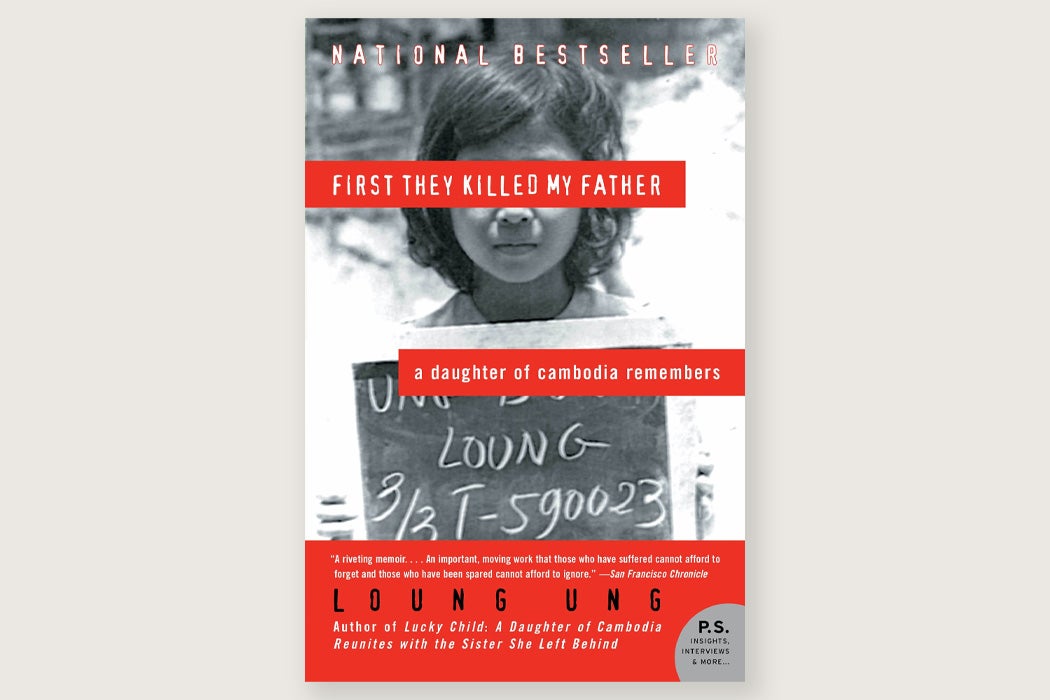The memoir of Cambodian American activist Loung Ung, First They Killed My Father (2000), has been celebrated in mainstream media for its account of growing up under the Khmer Rouge regime of the 1970s and, notably, was adapted into a feature film directed by Angelina Jolie. Yet, other Cambodian Americans have vehemently called into question whether Ung can even represent herself to the public as “a daughter of Cambodia,” which is the phrase used in the book’s subtitle.
Responding to the controversy, Bunkong Tuon draws on scholarship about testimonial narratives—“the primary form of writing about the Cambodian genocide” but a genre that also includes Holocaust memoirs and the acclaimed Indigenous Guatemalan biography I, Rigoberta Menchú—to address “how Ung’s text fails to bear witness in some ways but triumphs in others.”
Testimonial literature carries expectations of a high standard of accuracy, as Tuon explains. “In order for writing by survivors of the Cambodian genocide to be effective as evidence against the Khmer Rouge leaders,” he writes, “it must be absolutely accurate in its portrayal of life under the regime.” Since “the narrator in testimonial literature gains the right to speak on behalf of her people and testify to the suffering they endured,” any inaccuracies in the text would seem to raise doubts as to the author’s ability to speak for the social group that she represents.
In the case of First They Killed My Father, critics dispute Ung’s description of her extremely wealthy childhood as “middle class” as well as her characterization of a red chiffon dress as traditional New Year garb, when such habits “seem more Chinese than Cambodian.” Tuon notes that these concerns raise a key question:
If testimonial literature as a discourse requires that the writer occupy the same subject position as the people for whom she claims to speak, then does Ung, who is of Chinese-Khmer descent and connected to an urban elite whom many Khmers hold responsible for the corruption of Cambodia, have the right to represent its people?
Other flashpoints include Ung’s incorrect reference to the age of the Angkor Wat monument and the recipe for a Khmer noodle dish that—contrary to what she says—does not contain mint leaves. These inaccuracies open the door to aspersions on Ung’s motivation, with some critics “suggesting that Ung is, above all, trying to appeal to readers and sell copies of her book,” writes Tuon.
Weekly Newsletter
However, he highlights how the memoir is told from the point of view of a very young girl—a strategic narrative choice, in which “Ung consciously places the assumed innocence of the child in contrast to the brutal experience of life under the Khmer Rouge regime.” The inaccuracies in the text “result from her filtering facts through emotion and trauma; they serve as markers of the psychological effects on survivors of the Khmer Rouge terrorism.”
That is, mistakes can also testify to the “destruction that impedes the survivor’s ability to create the kind of narrative that can be used as straightforward evidence” of the Khmer Rouge period.
“Instead of dismissing First They Killed My Father,” he concludes, “I argue for its rightful place in the body of Cambodian American texts marking this painful period in Cambodian history; its emotional truth complements the historical facts produced in other texts.”
Support JSTOR Daily! Join our membership program on Patreon today.







